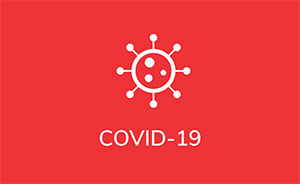CLL Society’s Chief Medical Officer Dr. Brian Koffman was asked to comment on how the CDC’s proposed recommendation to cut COVID-19 isolation time will impact those with CLL / SLL or chronic lymphocytic leukemia / small lymphocytic lymphoma and the broader immunocompromised community. California and Oregon have already made similar changes. The CDC’s changes are now being reviewed and should be published this April.
Below are his responses to the request from WebMD.
How would the proposed changes to the CDC’s COVID-19 isolation recommendations potentially impact vulnerable populations like yourself and others?
It seems likely that the CDC will propose changing its recommendation to state that those infected with COVID-19 can go back into the public 24 hours after their fever is gone, and if their symptoms are mild and improving, even if they still test positive, they might still be contagious. While this recognizes what people are now doing and their desire to move on from the pandemic and also reflects the improved outcomes seen in the general population with the current COVID variants and better treatments, it ignores the increased risk this change will have for the most vulnerable including the 6.6% of the population that has impaired immunity. Among those are the more than 200,000 living with CLL / SLL, where the risk of hospitalization, ICU admission, long COVID, and even death remains unacceptably high. These policies will increasingly isolate the vulnerable community.
What measures do you usually take to protect yourself from COVID-19 exposure, and will this new policy change anything?
As a CLL patient, these changes will reinforce the need for me and others immunocompromised to continue avoiding crowds, mask indoors, and practice careful hand hygiene. It will make restaurant visits and other indoor events even higher risk. Many, myself included, will consider the risk prohibitive and choose to stay home. It is hard to overestimate the negative impact that this growing social isolation will have on the psychological health of an increasingly marginalized and forgotten community. Moreover, we have clear evidence that it is often in the infected immunocompromised where new variants arise, so protecting them protects everyone.
As a physician, do you think at this point in the pandemic that CDC recommendations still influence patient behavior?
As the Chief Medical Officer at the nonprofit CLL Society, which is dedicated to the unmet needs of the CLL community, our research tells us that CLL patients and other at-risk groups remain very attuned to the advice of the CDC. Still, the current low levels of recommended vaccinations and public masking tell us that the majority of the general public, at best, ignores the CDC and, at worst, distrusts their recommendations.
You can read the complete WebMD article here: CDC Could Cut COVID Isolation Time: What It Could Mean. The article offers more background on the likely changes and broader reactions from other experts alongside some quotes from Dr. Koffman’s fuller answers shared above.
WedMD has an amazing 118,900,000 unique visitors to its site per month. CLL Society is pleased to be able to continue to get the word out to the public about our continued vulnerability. The pandemic is not over for us; many others are at higher risk. Government agencies and the general public need to be reminded about what’s at stake if they ignore the 6.6% of the US population that is immunocompromised or immunosuppressed.

















